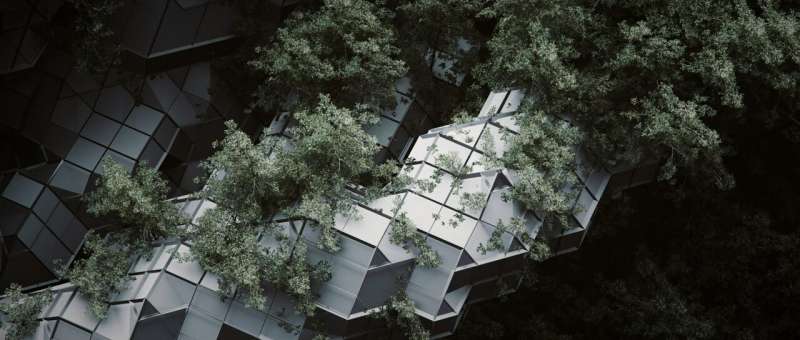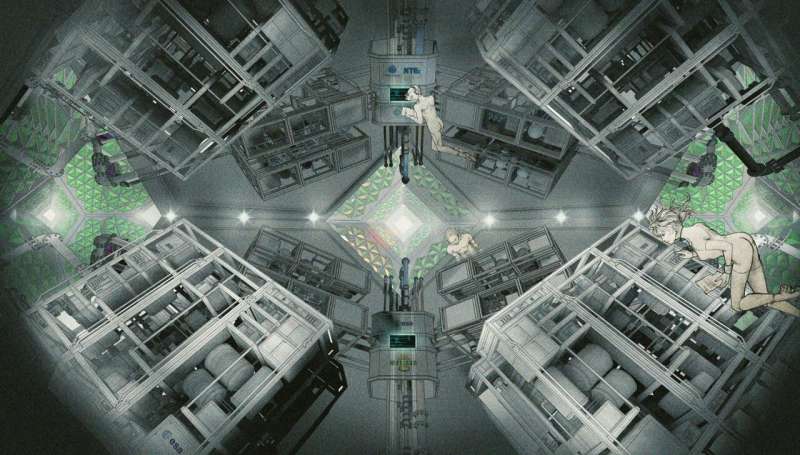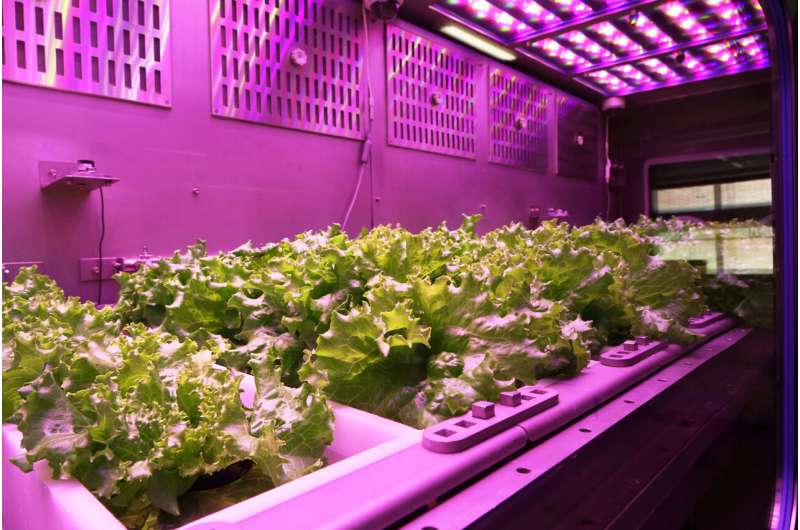This article has been reviewed according to Science X's editorial process and policies. Editors have highlighted the following attributes while ensuring the content's credibility:
fact-checked
trusted source
proofread
Q&A: Sustainability in space travel can aid efforts here on Earth

Dr. Angelo Vermeulen is a space systems researcher at Delft University of Technology in the Netherlands, where he explores advanced concepts for interstellar exploration. Over the past decade, he has collaborated closely with the European Space Agency's (ESA) MELiSSA program, developing concepts for bioregenerative life support systems for space. In such systems, a variety of microorganisms progressively break down human waste and the resulting compounds are harnessed by plants to produce oxygen and food for the crew.
Beyond his scientific pursuits, Dr Vermeulen is also an accomplished artist and a co-founder of the SEADS (Space Ecologies Art and Design) collective. SEADS creates artworks that seamlessly integrate concepts and technologies from a diverse array of scientific disciplines, including biology, neuroscience, computer science, and astrophysics.
He is the author of a recently published Frontiers in Astronomy and Space Sciences article in which he and his co-authors describe a new model that theoretically produces all required food and oxygen during long-duration and remote space missions, removing the necessity for resupply from Earth. In this latest entry to the Frontier Scientists series, he has caught up with us on his current research.
What inspired you to become a researcher?
I've always been interested in science and exploration, for as long as I can remember. When I was eight, I knew I was going to become a biologist and I started building my own miniature home lab. I bought my own microscope (which is still sitting in my office) and that opened up a whole new world. By age twelve, a friend and I initiated our science magazine, 'Know,' selling copies at school. I predominantly covered biology and space exploration. Both fields were hugely fascinating for me, and it's essentially what I am currently doing as a researcher at TU Delft.
In my formative years, I also developed a profound interest in the arts, immersing myself in photography, cinema, and literature. During my biology Ph.D., I attended art school, completing a four-year photography program that naturally evolved into video and installation art. Currently I am combining practices, uniting scientific research with artistic creation.

Can you tell us about the research you're currently working on?
Together with my collaborators, I am developing computer models for systems for interstellar human exploration. Can we conceive a crewed spacecraft traveling in deep space for multiple decades without resupply possibilities? What would such systems need to be resilient enough to cope with the high degree of uncertainty experienced during a mission through unknown territories? What would the architecture of such systems look like?
One of the prerequisites will be to integrate a bioregenerative life support system (BLSS). This is an idea that can be traced back to Konstantin Tsiolkovsky who imagined plants growing inside a rocket-shaped spacecraft to sustain the astronauts.
In our current research we are developing an agent-based model (ABM) of the MELiSSA loop, ESA's version of a BLSS. This modeling approach is used to simulate the interactions of individual agents within a system to understand how they lead to emergent patterns at the collective level.
In our ABM, the agents represent crew, bioreactors, and plant plots, each with their own set of rules and behaviors. The foundation of the ABM is a detailed description of the major chemical pathways throughout the BLSS. Because we're interested in fully autonomous systems, the challenge consists in closing the loop and making sure that all oxygen and food needs for the crew are met.
This research is part of the E|A|S (Evolving Asteroid Starships) project that I initiated a few years ago. In this project we explore the usefulness of bioregenerative systems and bio-inspired engineering for multigenerational deep space exploration.
In your opinion, why is your research important?
Thinking about closed-loop systems is also extremely valuable for life on Earth. It is an approach that could radically reduce or even eliminate waste and fits entirely into the concept of the circular economy. I call this approach 'molecular sustainability.' It's a lens to look at sustainability at the smallest level: molecules and atoms. It creates a different sensitivity and enables us to look at the world and its material flow in a much more interconnected way.

Are there any common misconceptions about this area of research? How would you address them?
One of the main misconceptions I often have to address is the perceived opposition between space exploration and climate change. Isn't it a waste to go to space while we have so many problems with our climate here on Earth? However, this is not a zero-sum game. On the contrary, it's actually through space exploration that we discovered climate change—using Earth observation satellites. And we'll need space technology in order to adequately manage Earth and safeguard its future. Our life on Earth and life in space are inextricably intertwined. Moreover, by going into space, the sheer beauty and uniqueness of our planet becomes even more apparent. It's often said that the famous 'Earthrise' photo from the Apollo era kickstarted the environmental movement.
What are some of the areas of research you'd like to see tackled in the years ahead?
The next step in our research is multimodeling: linking different types of models to gain a more holistic understanding of the questions we're investigating. Alongside the ABM, we also developed a model that describes the behavior of self-replicating space architecture for interstellar exploration. It would be wonderful to merge all our work from these past years into a single virtual workbench.
I think we also need to focus more on the application of closed-loop and bioregenerative systems right here on Earth and put more effort into addressing the significant issue of food waste. According to the Food and Agriculture Organization of the UN, a staggering 1.3 billion tons of food is lost or wasted annually. This issue is especially alarming considering the rising global population and the simultaneous challenges of food insecurity and environmental degradation. Adopting a mindset focused on 'molecular sustainability' seems crucial to solve this problem.
Additionally, I think we require a more ambitious and equitable approach to advance humanity into space, not driven by political motivations or competition, but as a unified collaborative endeavor.
How has open science benefited the reach and impact of your research?
Open science is absolutely key for developing a more globally informed society. Since I collaborate with people from very different fields, both inside and outside academia, it's important that my work can be accessed by everyone. This commitment to openness not only accelerates the advancement of knowledge but also fosters a collaborative spirit that transcends boundaries and enriches collective imagination.
More information: Angelo C. J. Vermeulen et al, Stoichiometric model of a fully closed bioregenerative life support system for autonomous long-duration space missions, Frontiers in Astronomy and Space Sciences (2023). DOI: 10.3389/fspas.2023.1198689
Provided by Frontiers





















